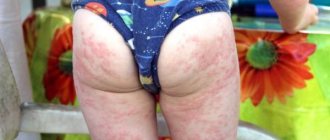From this article you will learn:
- what does ocular herpes look like - symptoms, photos,
- herpetic conjunctivitis,
- types of herpetic keratitis,
- herpes on the eye - treatment, effective drugs.
Ocular herpes (ophthalmoherpes) is a lesion of various parts of the eye, most often caused by infection with the herpes simplex virus type HSV-1. Less commonly, the causes may be a type of HSV-2 virus, as well as the herpes virus “Varicella zoster” (shingles virus). Infection can occur exogenously - in this case, the herpes virus is introduced into the eyes with dirty hands, through a towel or handkerchief, as well as neurogenic or hematogenous.
The symptoms of ocular herpes are varied. In most cases, only the superficial parts of the eye are affected - the cornea (keratitis), as well as the eyelids and conjunctiva of the eye (blepharoconjunctivitis). However, with improper treatment or lack of timely treatment, the herpes virus can spread to the iris, retina, choroid, and optic nerve in just 1-2 days. And this threatens not only vision impairment, but also blindness.
Modern research shows that the leading role in the development of eye herpes is played by the state of your immune system. Indeed, in most people, when the herpes virus gets on the eyelids or cornea, inflammation simply does not develop. But with pathology of the cellular component of immunity, a low level of antibodies to the herpes simplex virus, a low level of interferons (IFN-α and IFN-γ), and a low content of lysozyme in the tear fluid, conditions are created for infection and subsequent relapses.
Herpetic conjunctivitis –
Herpes on the eyelid (blepharitis) –
Primary eye infection with herpes most often occurs in early childhood. The first case of the disease is usually mild, resembling ordinary conjunctivitis (Fig. 1-2), blepharitis (Fig. 3-4), or a combination of both - blepharoconjunctivitis. A primary case of herpes on the eye usually resolves without involvement of the cornea, i.e. the development of keratitis does not occur. But if the cornea is still involved, then redness of the conjunctiva and rashes on the eyelids are also accompanied by symptoms such as lacrimation and photophobia, as well as possible some “blurred” vision.
What is included in the concept of “ophthalmoherpes” –
There are many classifications of ophthalmoherpes (Katsnelson, Kasparov, Maichuk, etc.). In addition, it is divided into ophthalmoherpes of the anterior and posterior parts of the eye. In this review, we will analyze the types of herpetic lesions of the anterior parts of the eye - as the most common.
Ophthalmoherpes of the anterior eye includes:
- herpetic "eyelid dermatitis"
- herpetic "blepharitis"
- herpetic "conjunctivitis"
- herpetic “blepharoconjunctivitis”,
- herpetic "keratitis".
Causes
There are many reasons for the development of a vesicle on the mucous membrane of the eye. The most common factors of formation are viral diseases, but there are other diseases in which this symptom manifests itself:
- Adenovirus. This is a common viral infection that is characterized by a red throat and fever. If the patient does not have treatment or the function of his immune system is impaired, a complication occurs. One of them is the formation of a bubble on the mucous membrane of the eyes.
- Herpes. The pathogen circulates in the blood and nerve tissues of almost all people. If the patient is exposed to a negative environmental factor or the immune function is reduced, rashes may occur on various areas of the skin or blisters may appear on the mucous membranes.
- Cyst. A bubble forms on the mucous membrane area and fills with liquid. This is a minor condition that can be easily treated by an ophthalmologist. But if an infection gets inside, pus forms, increasing the risk of infection of the internal tissues of the eyeball.
- Allergy. During seasonal exacerbations, reactions often occur in the eye area. This includes increased lacrimation and redness of the conjunctiva. Bubbles rarely form.
- Inflammatory and infectious diseases of the eyes. Bubbles are a consequence of a complication of an untreated disease that appears in the area of the mucous membrane, cornea, and conjunctiva.
- Papilloma. Most often, a rash due to the disease forms on the eyelids. But in especially severe cases it can spread to the mucous membrane of the eyes.
The doctor needs to identify the exact cause of the disease in order to prevent the risk of relapse after treatment.
Symptoms
The symptoms of the patient's condition depend on the cause that caused the disease. The most common signs are:
- the formation of a vesicle without any clinical symptoms, for example, with a cyst;
- pain, itching, burning in the eye area;
- sensation of a foreign body under the eyelids;
- deterioration of visual acuity;
- accompanying rash on the eyelids;
- blurred vision;
- increased pain when exposed to bright light;
- increased production of tear fluid;
- swelling, inflammation of the skin surfaces and eye tissues;
- discomfort when turning the eyes.
If the liquid inside is clear, this phenomenon is most often associated with a common cyst or virus. If the secretion becomes cloudy and yellow, the doctor will suspect suppuration. If the cause is herpes, and the blister bursts, the contents will infect surrounding healthy tissue. Subsequently, the liquid from the bubble will spread throughout the eyes and eyelids.
What causes herpes to form around the eye?
Ophthalmoherpes may not manifest itself for a long time, but remain in the so-called “dormant state”. A variety of factors can provoke its symptoms. Among them:
- hypothermia (hypothermia);
- prolonged exposure to the open sun without sunglasses;
- poor nutrition, malnutrition and disruptions in the digestive system;
- long-term use of antibiotics during illness;
- stress;
- lack of hygiene;
- eye injury;
- immunodeficiency states.
Also, ophthalmoherpes often occurs during pregnancy, as a woman experiences hormonal disruptions and the body’s protective functions are weakened.
Hormonal drugs can also activate the virus. When a person is completely healthy, he eats properly, gets enough sleep, follows the rules of hygiene, tear fluid protects the organs of vision from the spread of infection.
With a decrease in immunity, general and local, the tear fluid cannot fully perform its protective functions, so herpes develops.
Diagnostics
To diagnose a patient’s condition, an integrated approach and many techniques are used:
- Anamnesis collection. This is data obtained from the words of the patient or his close relatives. Based on them, the doctor can guess the cause of the disease.
- General examination of the superficial tissues of the organs of vision. The doctor diagnoses the condition of the eyelids and mucous membranes. Swelling and inflammation may occur. A bubble on the mucous membrane immediately catches the eye.
- Eye swab. Based on this, you can determine the viral or infectious nature of the disease. If an increased number of bacteria is detected, a culture will be performed. It will be used to detect the exact pathogen and the antibiotic that can affect it.
- Fundus examination. To do this, a solution is instilled into the patient's eyes, which temporarily disrupts the accommodation of the pupil. The doctor can determine or rule out the spread of infection to the internal structure of the eyes. The condition of the lens, cameras, retina, and microcirculation vessels is assessed.
Based on diagnostic tests, a reliable diagnosis can be made. Treatment begins immediately to prevent the development of complications.
Treatment
Treatment is carried out comprehensively depending on the cause that caused the disease:
- antiviral drugs that act on the detected pathogen (for example, for herpes, Acyclovir is prescribed in the form of tablets, drops, ointments);
- an antibacterial agent that has an effect on the pathogen that causes the disease;
- nonsteroidal anti-inflammatory drugs that eliminate inflammation in the eye area;
- drugs that stimulate the immune system;
- surgical intervention, which is most often performed under local anesthesia (used for cysts).
The doctor may also prescribe symptomatic treatment in the form of painkillers or drugs that reduce body temperature.
What measures to take
- The very first thing to do is contact an ophthalmologist . The accuracy of the established diagnosis directly affects the quality of treatment.
- Compliance with personal hygiene rules : careful washing, individual face towel.
- Do not rub your eyes to prevent mechanical damage, do not remove tumors yourself. This may lead to a worsening of the disease.
- Do not use low-quality cosmetics.
- In case of allergic etiology, avoid exposure of the body to allergens : diet excluding food products that cause allergies; contact with pets if you are allergic to wool; chemicals, etc.
Prevention
To prevent the development of blisters in the eye area, it is recommended to adhere to the following rules:
- timely examination by an ophthalmologist at least once a year for the timely detection of minor abnormalities or serious diseases;
- treatment of all systemic viral and infectious diseases in a timely manner to prevent the development of complications;
- hardening, which is used in the form of visiting the pool, walking barefoot at home, drinking cold water;
- maintaining eye hygiene; if discharge appears, it is necessary to wash it with an antiseptic, for example, Furacilin.
The appearance of bubbles on the eyes is a fairly rare occurrence. When they are formed, self-medication is completely excluded. It will lead to a deterioration in the patient’s condition and infection. It is recommended to adhere to the dosage of medications prescribed by your doctor.
How to treat?
Reference! Eye drops, ointments and antibiotic tablets are used as therapy.
They are used both individually and as part of complex treatment .
The dosage is prescribed on an individual basis (taking into account existing contraindications and the severity of the disease).
What drops can be used and how to use them?
To treat viral conjunctivitis, drops such as:
- Aktipol. A fast-acting drug with antiviral and immunomodulatory effects, eliminating dryness and discomfort in the eye. Application: instill 1-2 drops into the conjunctival sac of the affected eye (slightly pulling back the lower eyelid), repeat the procedure 6-8 times a day. Use within a week. Price: 285 rubles (5 ml).
- Oftalmoferon. It has a wide spectrum of antiviral activity, has anti-inflammatory, regenerating and immunomodulatory effects. Application: instill 1-2 drops into the eyes 6-8 times a day (until symptoms disappear). Price: 310 rubles (10 ml).
- Sulfacyl sodium. The drug has a wide spectrum of antimicrobial action; it is recommended to instill 2-3 drops into the lower conjunctival sac. Frequency of use: 5-6 times a day. Use until symptoms resolve. Price: 35 rubles (10 ml).
- Poludan. A fast-acting remedy for the treatment of adenoviral forms of conjunctivitis and keratitis. Application: 2 drops 7-8 times a day. Course of treatment: 7-10 days. Price: 110 rubles (5 ml).
Important! If allergic reactions occur, treatment should be stopped and consult an ophthalmologist.
What ointments can be used and how to apply them?
eye ointments are used to fight infection .
them behind the lower eyelid using , for example, a cotton swab .
The most effective drugs are considered:
- Oxolinic ointment. Used to treat the adenoviral form of the disease (usually as part of complex therapy). Application: place a small amount of ointment behind the lower eyelid, repeat the procedure 3 times a day. Use within 5-7 days. Price: 60 rubles (10 g).
- Zovirax. An antiviral agent that fights the herpes virus. Application: place behind the eyelid of the affected eye up to 4-5 times a day. Course of therapy: 7-10 days. Price: 190 rubles (5 g).
- Acyclovir. An antiviral (antiherpetic) drug that helps reduce pain. Application: place a small amount of the product into the lower conjunctival sac up to 5 times a day. Course of treatment: 5-6 days. Price: 135 rubles (5 g).
- Virolex . A potent antiviral agent prescribed for the treatment of herpetic conjunctivitis. Application: place behind the lower eyelid of the inflamed eye up to 5 times a day. Use within 5-7 days. Price: 220 rubles (4.5 g).
To avoid complications, self-medication is not recommended . It is advisable to coordinate the course of treatment and dosage with your doctor.
What to do in case of acute form?
Remember! In the case of acute conjunctivitis, treatment must be entrusted to a professional, so it is better to undergo therapy in a hospital setting.
If at present it is not possible to see a doctor, you can use the same drugs - drops and ointments that were listed above (Actipol, Oftalmoferon, Acyclovir, etc.).
In this case, it is recommended to slightly increase the dosage and frequency of use.
Features of antibiotic treatment
Antibiotics are used only in the case of a bacterial form of the disease .
Other types of conjunctivitis are contraindicated to treat with antibiotics , since they destroy beneficial microflora.
Antibiotic drugs are used as part of complex treatment , these include: Tetracycline, Tsiprolet, Levomycetin, Amokiscillin, etc.
Traditional methods
Know! Proven folk remedies can be used as independent therapy at home or as part of a complex treatment.
Here are some of them:
- Chamomile decoction - 1 tbsp. l. dry herbs, pour a glass of boiling water and boil over low heat for 3 minutes. Next, cool the product, strain through cheesecloth and use to wash the eyes. Repeat the procedure 5-6 times a day. Use to completely eliminate symptoms.
- Calendula infusion - 1 tbsp. l. Pour a glass of boiling water over dry raw materials and let it brew for an hour. Use the prepared infusion to wash the eyes 4-5 times a day (until symptoms disappear).
But to enhance the therapeutic effect, it is better to combine folk remedies with medications.
Keep in mind! If you limit yourself exclusively to folk remedies, the treatment process may be delayed.










